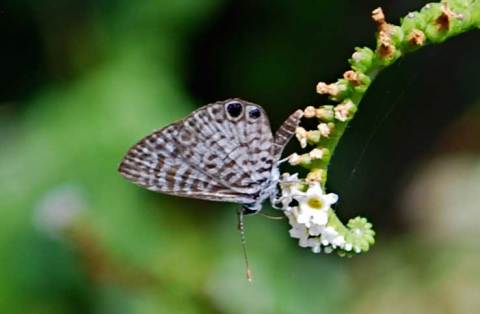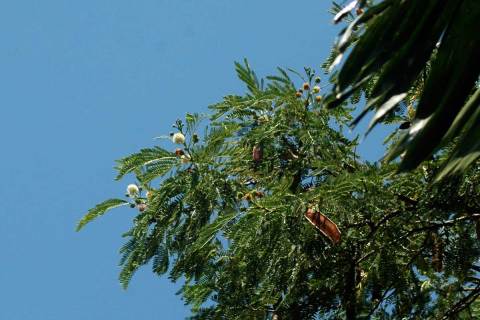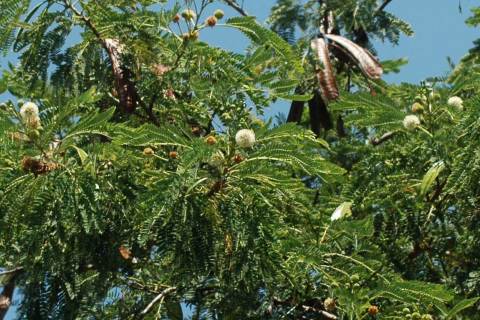One great thing about working from home is that it’s relatively easy to see wonderful things on your lunch break—that is, if you’ve planted the right backyard habitat. Last week I wrote about the butterfly-attracting qualities of Heliotropium angiospermum, or Scorpion’s-Tail, which is conveniently located between my pool and the backyard fence. Back then, I was captivated by the sight of a Pearl Crescent (Phyciodes tharos) butterfly resting on one of the exquisitely sculpted leaves of this showy little flower.
Today I went outside to see who else might have been visiting (before the Pearl Crescent there was the Mallow Scrub-Hairstreak), and as you can see from the photo below, today it was the turn of Leptotes cassius. This handsome little devil is the common and widespread (well, in Florida and Texas, anyway, although the two populations are geographically distant enough that they have been recognized as two separate subspecies, theonus in Florida, and striata in Texas) Cassius Blue butterfly:
These little guys are abundant in my neighborhood; I’ve seen up to half a dozen at once chasing each other off of favored perches on this little flower, so I’m pretty sure someone here has one of their many host plants in the pea family (Fabaceae). In fact, I think the large tree on the side of my house, one whose ID I was pretty uncertain of until researching this post, is one of the hosts. That tree has the powder-puff seeds, the long pods, and the compound, fine-textured, feathery leaves of the lovely Florida native False or Wild-Tamarind (Lysiloma latisiliquum):
One of the advantages to keeping this weblog is that research from one area (butterflies) leads naturally into knowledge about others (the most likely ID of my mystery tree!). Yay, blogging!
Here’s another shot of the foliage:
According to Rufino,
Wild-tamarind plays an extremely important role in the ecology of South Florida hammocks. It is a fast-growing pioneer species. Seedlings establish themselves in open, sunny areas and quickly grow into large shade trees that serve as “nurse” trees for a wide array of hammock species needing such a canopy to become established. [In fact, it’s doing that for my Pearlberry shrub right now!]
If I ever find a caterpillar in this tree, I’ll be sure to post about it. The branches are pretty far above the ground, though, so it’s not too likely anytime soon.



